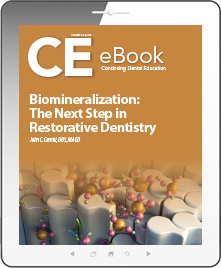Biomineralization: The Next Step in Restorative Dentistry
Released: Wednesday, June 21, 2017
Expires: Thursday, April 30, 2020
By John C. Comisi, DDS, MAGD
Commercial Supporter: Shofu
While significant advances in resin-based sciences have occurred over a number of decades, problems with composite restorations, such as recurrent decay and fracture, have continued to materialize. Bioactive materials deliver minerals beneficial to tooth structure, simulating mineralization and formation of chemical bonds that help seal the tooth and prevent microleakage. The use of bioactive materials, which are capable of apatite creation at the restorative–tooth interface, is an approach that can potentially enhance the longevity and durability of composite restorations. In dentistry's efforts to overcome the challenges of resin-bonded adhesives, a change in methodology toward the use of biomineralization may be warranted.
LEARNING OBJECTIVES:
-
Discuss the history and development of composite restorations and adhesive bonding agents.
-
Explain reasons for composite restoration failures and why changes are needed in the way restorative care is provided.
-
Describe the concept of bioactive materials and how their development and usage can enhance longevity and durability in the restorative process.
About the Author
John C. Comisi, DDS, MAGD
Private Practice, Ithaca, New York
